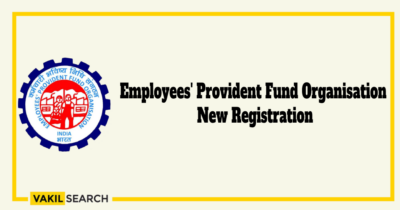Many people don't know the difference between EPF and EPS. Even though they're both government-established pension programmes, they're different.
The EPF and EPS were created by the Miscellaneous Provisions Act and the Employee’s Provident Fund Act of 1952. A board of trustees consisting of representatives from federal and state agencies, corporations, and employees manages the programmes. The government of India has set up several investing and savings schemes to encourage its residents to set aside money for the future. There are a few different employee benefit schemes, but the Employee Pension System and the Employees Provident Fund schemes are the most widespread.
Saving for retirement is the primary goal of both sets of plans. Both projects are targeted at those who are currently earning a wage and offer guaranteed rates of return. The EPF and EPS assist people in saving for retirement. Both plans have advantages and drawbacks, but they operate differently and offer distinct features. Here, we’ll compare and contrast EPF and EPS so you can make an informed decision.
EPF: What is it, and How does it function?
EPF (Employee Provident Fund) is a retirement funds plan where both employer and employee contribute 12% of primary and dearness allowance (DA). In all, it accounts for 24% of the whole. Before retirement, you can access a portion of the money you’ve put away. The sum you are allowed to take out once you’ve reached retirement age.
If you join this programme, you’ll be assigned a UAN, or Universal Account Number, that will follow you for the rest of your working life. Then, if you switch employment, your UAN will follow you to the new position.
This scheme has the following features:
- You can start withdrawing from the plan after five years of service. This withdrawal can be used to purchase a home, settle a mortgage, or pursue higher education.
- Benefits, interest, and contributions to the Employees’ Provident Fund are not subject to federal income tax.
- The investing plan generates interest regularly and at a fixed rate. This interest rate was set by the government and is reviewed frequently.
Are EPF Withdrawals Before Maturity?
After retiring from regular paying employment, an EPF registration member is eligible to withdraw their EPF balance. After one month, you can withdraw 75% of your EPF sum, and after two months, you can withdraw the remaining 25%. In exceptional instances like marriage, child education, loan repayment, unemployment, etc., a person can withdraw PF before maturity. Withdrawing money from your employee retirement fund (EPF) before the five years will result in a 10% tax penalty.
EPS: What is it, and How does it operate?
The Employees’ Pension System (EPS) is another retirement programme provided by the Indian government. It originates with the EPF, meaning that not all employer contributions are used to fund the EPF. For the EPS (Employee Pension Scheme), 8.33% of this sum is allocated. The remainder is your mandatory EPF payment.
The maximum amount that a participant can contribute to this programme is 1,250. There is no participation from workers in this plan. So now that you know the basics of both schemes, you can go deeper into the distinctions between EPF and EPS.
Specific features of the plan are as follows:
- Employer payments entirely fund the EPS system.
- Amounts deposited into the program will not earn interest.
- The employee must be 58 years old to collect a pension.
- A lump-sum withdrawal can be made after fewer than ten years of service or when the member turns 50.
- After turning 50, you may be eligible for a pension.
The worker will receive retirement income for the rest of their lives. After an employee dies, pension payments will still be sent to the person designated as the beneficiary.
Is EPS Lump-Sum Withdrawal Possible?
An EPS lump sum withdrawal is possible under the following conditions:
- If the employee in the EPS program resigns before completing ten years of service.
- If the member’s age is 58years.
Which Employees Are Eligible for Epf and EPS Benefits?
The following requirements include:
Click here to more about: https://www.epfindia.gov.in/site_en/
- Workers whose employers are part of the Employees’ Provident Fund Organisation can enroll in this retirement savings plan.
- If your company has more than twenty employees, compliance is mandatory.
- Employees earning up to Rs. 15,000 per year must include basic pay and dearness allowance.
- Employees with monthly incomes of more than 15,000 are permitted to make tax-free contributions.
Comparing EPF and EPS
Some important distinctions between the Employee Pension Scheme and the Employee Provident Fund are below:
Particulars
-
Employee Participation
EPF: 12% of base pay and DA
EPS: Nil
-
Employer’s Contribution
EPF: 3.67% of base pay and DA
EPS: 8.33% of base pay and dearness allowance.
-
Eligible Staff
EPF: All
EPS: Employees whose salary + DA is under Rs.15,000
-
Capital Gains
EPF: The monthly interest is calculated and paid annually.
EPS: The EPS account is a noninterest-bearing account.
-
Maximum Effort
EPF: The 12% salary contribution.
EPS: 8.33% of pay up to Rs.15,000 (Rs.1250) is contributed.
-
Tax-Free
EPF:
- Suppose the annual donation exceeds Rs.2.5 lakh. The interest earned on the excess must be taxed.
- TDS @10% is deducted from EPF withdrawals before five years.
- No redemption tax
EPS: Both pension and lump sum are taxable.
-
Cash Withdrawal
EPF: After age 58, or if unemployed for 60 consecutive days or more.
EPS: Pension benefits become available to those who are 58 or older.
-
Early Withdrawal
EPF: Certain qualifying life events, such as marriage, having children, paying off debt, losing a job, etc., qualify for a partial withdrawal.
EPS:
- After achieving age 50, you are eligible for an early pension.
- If the participant reaches age 58 or completes their service in less than ten years, they are eligible for a lump sum distribution.
-
Amount of Early Withdrawal
EPF: Complete access to your EPF balance
EPS: This sum is refundable based on the number of years of service.
-
80C Deduct
EPF: Employer contributions up to Rs.1.5 lakh are tax deductible.
EPS: No withholding is permitted due to the lack of an employee contribution.
Conclusion
EPF and EPS are two types of employee welfare programs. However, they are distinct from one another. If you receive a salary, you should familiarise yourself with these plans to maximize your financial security in the future. EPF provides retirement benefits in the form of a lump amount, while EPS guarantees a steady income for the rest of your life. Since both plans encourage savings toward a common objective, they are critical components of any workplace’s retirement savings strategy. EPF is a plan where the employer and employee contributions to the employee’s income. On the other hand, EPS funding comes solely from an employer. Vakilsearch should be consulted for any further assistance.
Also, Read:









